Features of St Oswald’s
- The Font
- The Entrance Porch (South Door)
- Metcalfe Chapel
- The Winn Memorial Windows
- The Organ
- The Bells
- The Clock
The Font
Rather surprisingly and usually, the church has two stone fonts – a more modern one close to the main entrance (south door) of the church and the much older font close to what was once the Chantry Chapel of St Anne but now houses the organ.
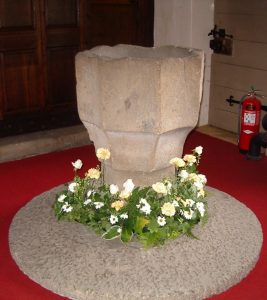
The older font is of simple design and solid strength and its exact date is not known but possibly dates from before the 15th century. Notes in the church suggest that this font was removed from the church in 1775 when it was sold by the church warden William Thompson for 3/- to James Lightfoot.
An entry in Lightfoot’s personal account book says
‘It (the font) stands as a curiosity in my yard and I wish it to remain there as a monument of antiquity’.
And there it did stay for a good number of years! The font was returned in the 1930s and mounted on a millstone and placed in its current position. This is the font that we usually use for our baptisms today. If you look cl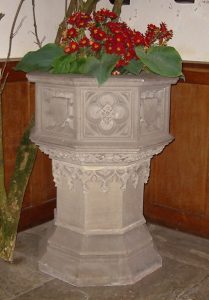 osely, you will see that the font still bears the marks to show it once had a lockable lid. In the 17th century, all fonts were required to be locked to prevent the Holy Water being stolen.
osely, you will see that the font still bears the marks to show it once had a lockable lid. In the 17th century, all fonts were required to be locked to prevent the Holy Water being stolen.
The newer font, with the decorated stonework and wooden lid, was acquired in the 1850s during the Victorian improvements to the church. It was given to the church by John Holmes in 1854.
Close to the new font is an interesting stone, now used as an umbrella stand, but it’s original purpose has been lost to the mists of time. It has been suggested it was a chimneypot!
The Entrance Porch (South Door)
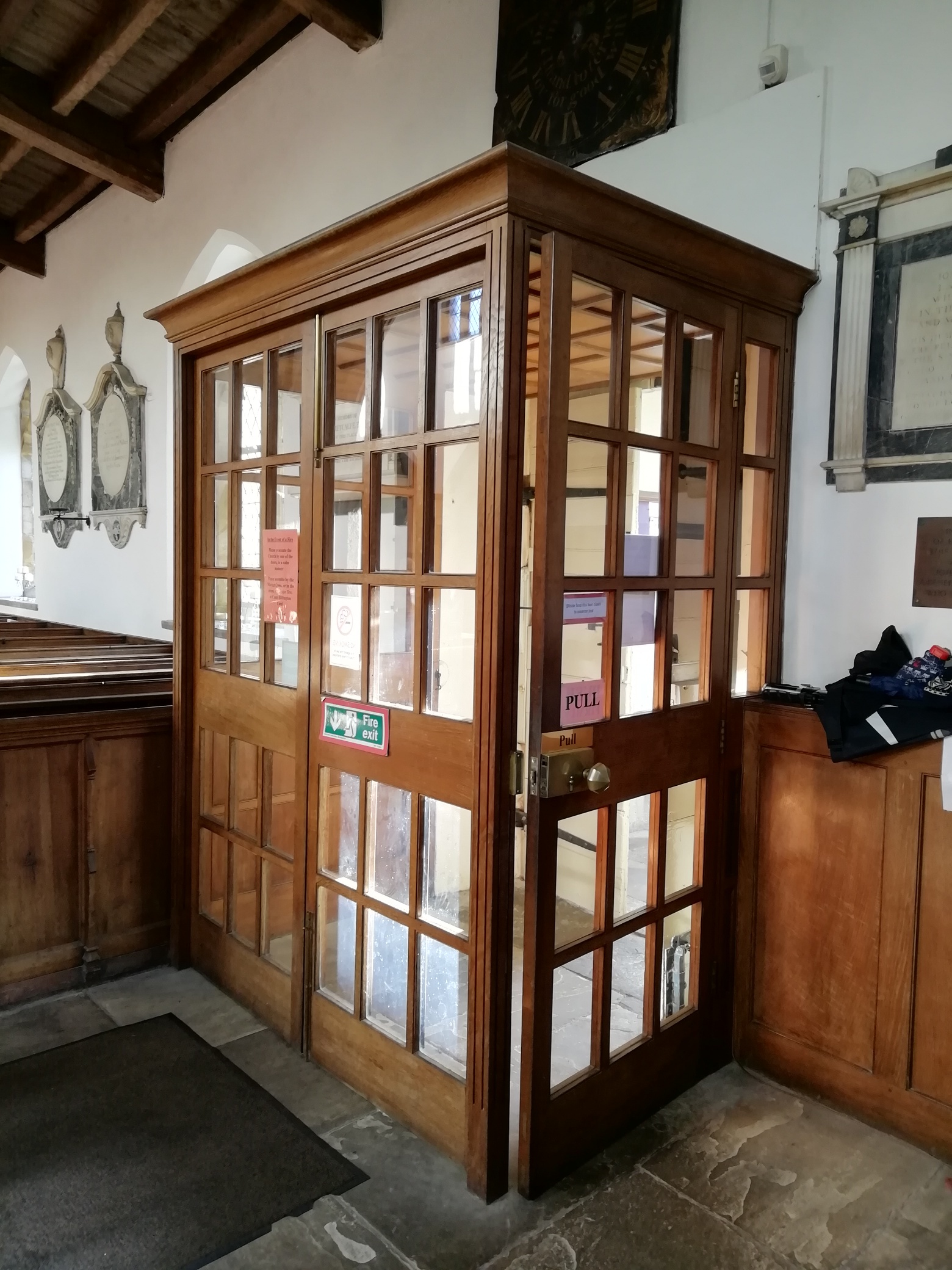
The entrance porch and panelling are a memorial to the late Bishop of Birmingham, Leonard Wilson, who retired to the parish in 1969.
The work in oak is by the craftsman Claude Townsend of Follifoot near Harrogate and consist of two glazed panel doors and a single glazed panel door. In winter months, the outer doors can be opened, and visitors can enter through the single glazed door, which allows entry without letting the wind and weather in. During the summer months, the double doors are often opened to allow easy access, but also let the warmth in!
Metcalfe Chapel
At the east end of the south aisle, where the organ now stands, is the Chantry of St Anne, often referred to as the Metcalfe Chapel. It was founded by James Metcalfe of Nappa Hall in 1467 so that ‘masses might be said for his soul, and for the souls of his mother and father, for his sons and daughters and their posterity, for Richard Neville, Earl of Salisbury, for King Edward IV and his consort, Elizabeth, for his benefactors and for the souls of all the faithful departed’.
James set apart land in several locations in the Dale to support the chantry chapel. During the next 80 years, Askrigg had both a priest and a chantry chaplain.
The Metcalfe family rose to prominence around the same time. James was the son of John and Alice Metcalfe and he lived in Worton. He was a captain during the wars with the French and fought at Agincourt in 1415. In recognition of his service, Sir Richard le Scrope gave James the Nappa lands. James married Gelsome of Ireby Hall and together they built Nappa Hall in 1459.
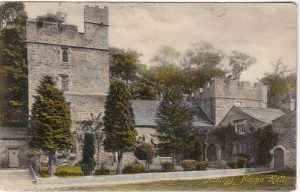
James and his wife were buried in their chantry chapel, along with many of their descendants, who continued to live at Nappa for the following 2 centuries. James’ children included Thomas, chancellor for the Duchy of Lancashire and Miles, the Recorder for York. Thomas (1427-1504) married Elizabeth Hartington and one of their sons, James (1460-1539) was knighted. James married Lady Margaret Piggot and their children all made very advantageous marriages cementing their position in medieval society. Sir Christopher (1513-1574) married Lady Elizabeth Clifford of Skipton Castle; his sister Margaret married Lord Biddick, Ann married Richard Hebborne and his brother Edmund, a Cambridge graduate, married Ann Clifton.
Sir Christopher’s life was not plain sailing. The Scrope family opposed his appointment to the office of Master Forrester and then challenged the Metcalfe’s legal title to Nappa. The latter was of greater concern and Christopher ceded other estates in order to keep Nappa. When the chantries were dissolved, their endowments were kept by Edward VI, but Christopher managed to keep some by deception. Although Christopher was the High Sheriff, he left little but Nappa to his son, Sir James. James married Joane Savile but was barely 30 when he died leaving just two children, Thomas and Elizabeth. Thomas inherited Nappa but was a disastrous custodian and blundered from one disaster to another, resulting in his properties being mortgaged. He resorted to using bribery and threats which landed him in the courts on more than one occasion.
The Raydale Riot in 1617 was a serious brawl near Semer Water, which occurred when William Robinson claimed Raydale House, a Metcalfe property. James arrived with a company of men surrounding it, forcing Mrs Robinson to flee the house barefoot. William arrived with a band of men from York and in the ensuing alteration a man was shot dead. Sir Thomas narrowly avoided imprisonment and had to surrender an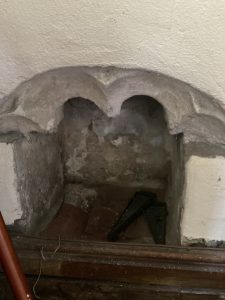 other estate. It was his wife Elizabeth’s relatives that came to his aid and the Slingsby’s bailed him out. He died at Nappa in 1655, having equally disastrously backed the king in the civil war with their son, Scrope, dying of wounds sustained in a skirmish near Oxford in 1645.
other estate. It was his wife Elizabeth’s relatives that came to his aid and the Slingsby’s bailed him out. He died at Nappa in 1655, having equally disastrously backed the king in the civil war with their son, Scrope, dying of wounds sustained in a skirmish near Oxford in 1645.
Both Thomas and Elizabeth were buried in the Metcalfe chapel, but this was the end of the Metcalfe’s power in the Dale. His grandson, Thomas (1687-1756) was the last Metcalfe to live at Nappa. After then, the house passed to the Robinsons of Newby Hall, through Frances Metcalfe’s descendants, one of Thomas and Elizabeth’s daughters (through her marriage to William Robinson.)
The Metcalfe’s did move back to Nappa Hall in 1889 as tenants and bought the house in 1930, selling it in 2008. During the latter years, the house was leased to tenants.
In 1877, the organ was placed in the ‘Nappa Chapel’ and in the 1940s the electric blower for the organ was placed on top of the Metcalfe slabs. Very little can be seen of the chantry chapel – perhaps the only clue is the little piscina in the wall.
The Winn Memorial Windows
The central stained-glass window on the north aisle wall and the window to the right were presented in memory of Elizabeth and George Winn by their daughter, Margaret Winn. The windows were commissioned from Heaton, Butler & Bayne of London, one of the leading firms in stained glass of the period, and whose work also has examples in Westminster Abbey.
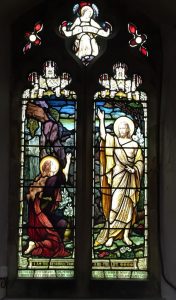
The Winn family had lived in the parish for generations. John Winn (1738-1817) lived at Nappa Hall after the Metcalfe’s left. He married Elizabeth l’Anson, a descendant of Captain John l’Anson who fought with Henry Tudor at the Battle of Bosworth. Their son, George (1774-1842) was born at Nappa and married Betty Metcalfe, the daughter of Richard Metcalfe of Calverts House in Muker.
George and Betty had three sons: Richard Metcalfe Winn (1800-1876) who was a farmer and lived at Nappa Hall. He married Isabel Fothergill and had at least 3 children. Their granddaughter Ella, married Rev Christopher William Wordsworth, the great grandson of the poet William Wordsworth.
John Winn (1799-1873) went to St John’s college Cambridge and became Vicar of St Andrew’s Aysgarth in 1827, remaining there until his death. He never married.
Youngest son, George (1808-1880), born at Nappa and is the George remembered in the stained glass. He studied law and was articled in Penrith to complete his studies. He married Elizabeth Clarkson from West Witton on 1st June 1837 and practiced as a solicitor in Askrigg. George and Elizabeth built a house in Askrigg 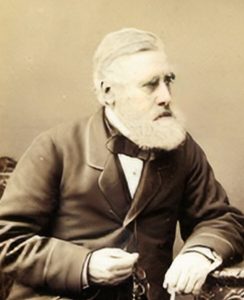 which they called Winnville, which still dominates the main street today as the White Rose Hotel. They were very active in the village, and the church, with George being one of the Askrigg ‘Four Men’ for many years, then being succeeded by his son. They were also church wardens.
which they called Winnville, which still dominates the main street today as the White Rose Hotel. They were very active in the village, and the church, with George being one of the Askrigg ‘Four Men’ for many years, then being succeeded by his son. They were also church wardens.
The couple had 8 children – George (1839-1876) became a solicitor like his father but was tragically killed when he crossed a ford on the way home from a to visit his fiancée. Further information is available on George by the East Window, which is a commemoration for George.
James Clarkson Winn (1844-1924) became a farmer in West Burton and was also a Justice of the Peace. His descendants still live in West Burton.
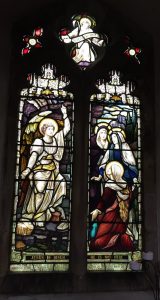
William Edmund Metcalfe Winn (1846-1924) also became a solicitor and lived in Winnville with his wife, Rose Wiggins. They had a large family, including 5 boys, 2 of whom became engineers, with one fighting in the Boer war.
John (1847-1886) suffered from mental health problems in his late teens and was transferred to the Royal Lunatic Asylum in Dundee in the mid-1860s. He remained there until his death in 1886.
Elizabeth (1842-1908) and Margaret (1849-1922) never married. They lived with their mother until her death – taking extended holidays on the South Coast. Elizabeth lived in Scarborough at the end of her life, in a villa she called ‘Wensleydale’. It was Margaret who paid for the memorial windows to her parents.
Their sister, Jane (1851-) married ship owner John Bruce Murray when she was 35 at St Martin’s in the Fields in Trafalgar Square London and had two children. The family moved to Scotland in the late 1880s.
Youngest child, Clarkson Winn was born in 1856, but died later that year.
For more information on the content and religious significance of the window, please see ‘the resurrection windows’ from the features tab.
The Organ
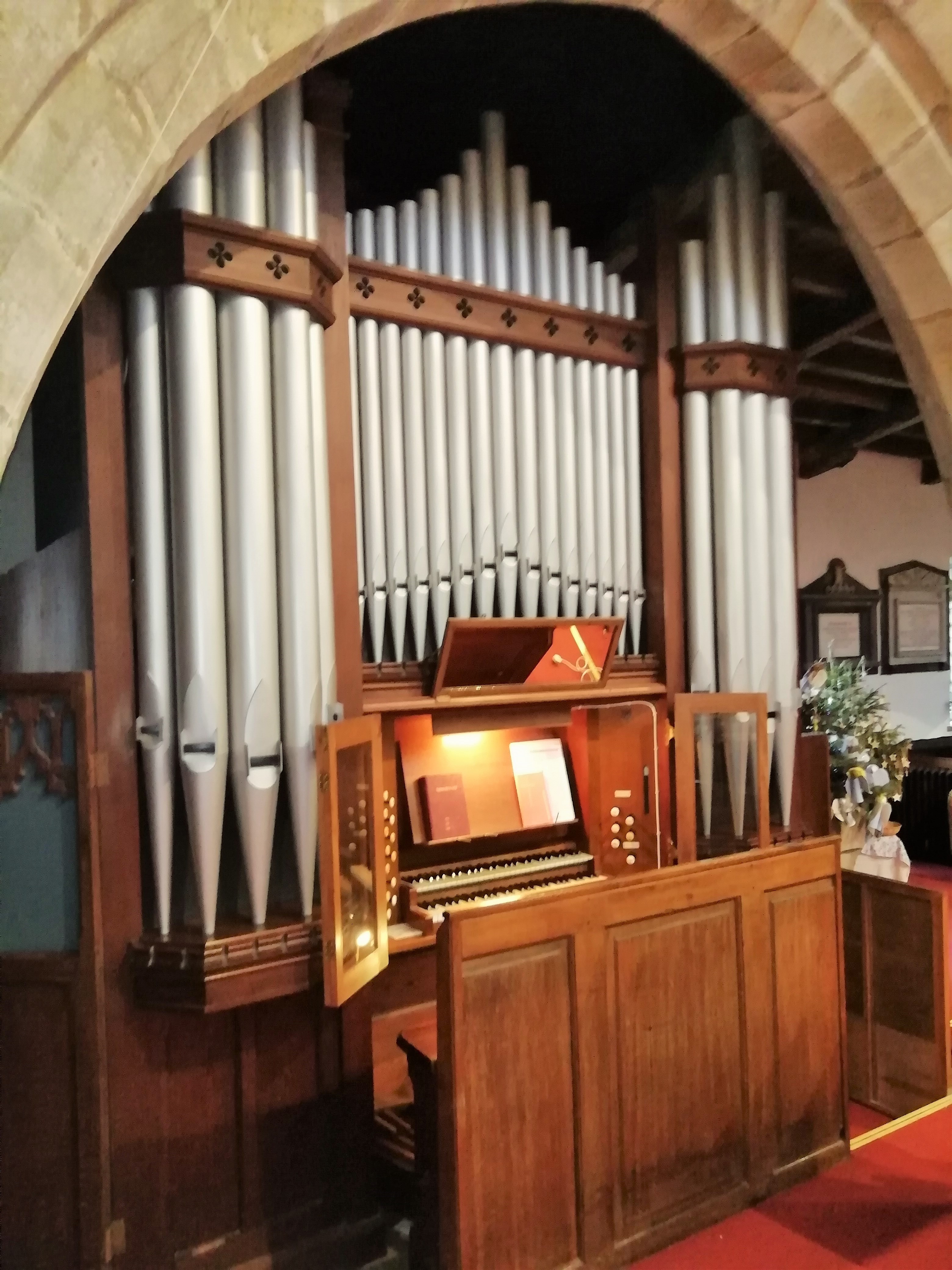
Before the 1853 Victorian “improvements”, there were many galleries to provide for the then large population in the parish. Music men, who sat in a gallery under the tower, played a variety of instruments and led the singing.
In 1858, a harmonium replaced the musicians and in 1869 an organ was purchased. In 1906 a new organ by Hopkins of York was installed in memory of Christopher Whaley, vicar from 1869 to 1905.
The organ is still used on a regular basis during our Sunday services
The Bells
There is no evidence of any bells in the tower prior to the mid-17th century. The current bells were installed in the tower in two phases. The original 3 bells were cast in 1657 and likely installed shortly thereafter. These three bells are:
The ‘small bell’ which has incised on it ‘Jesus be our spede 1657’ which weighs 7cwt and rings the note B;
The ‘middle bell’ which has ‘God save His church 1657’ incised on it which weights 8cwt and rings A;
The tenor bell, which has ‘All ye that hear my mournful sound repent before you lye in the ground 1657’. It weighs 10cwt and rings G.
In 1831, a proposal was made to increase the number of bells, but this was defeated at a church meeting, and it was not until 1897 that the above bells were recast, and three new ones purchased.
Each of the existing bells has ‘recast 1897’ on them and the tenor bell has an added inscription which says:
Cast by John Warner & Sons Ltd, London 1897 – Thomas Mallaby & Sons, Church Bell Hanger, Masham
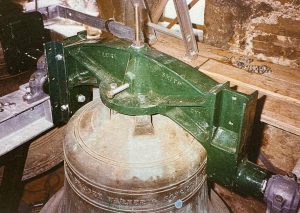
The three new bells are:
The treble bell, which has the inscription ‘in memory of Thomas & Jane Lodge. This bell was dedicated by their sons and daughters 1897’. It weighs 4cwt and rings E;
The second bell, which has the inscription ‘in memory of George & Elizabeth Winn. This bell was erected by their son James C Winn 1897’. It weighs 5cwt and rings D;
The third bell, which has the inscription ‘this peal of bells was recast in Queen Victoria’s Diamond Jubilee 1897. C Whaley, Vicar; WEM Winn, E Chapman, G Bell, Churchwardens’. It weighs 6cwt and rings C.
All bells are inscribed with ‘to the glory of God’
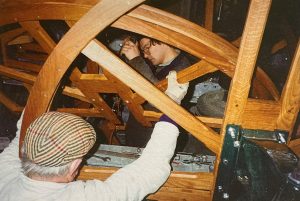
When the bells were hung by Thomas Mallaby, they were hung in an oak frame and in such a way that they all swung in the same direction which resulted in an uneven distribution of stress on the walls of the tower when ringing. By 1990 it was recognised that work needed to be done to remedy this and to replace the lead on the roof with stainless steel to match the rest of the church. The £35,000 needed was raised from donations and the work was carried out between January and April 1992.
The bells and the old frame were taken down along with the clock room floor and gradually the new frame was installed, together with new louvres on the windows and floor to the clock chamber. The bells were then rehung in a different way to reduce the stress on the walls.
The bells are rung on a regular basis by a group of dedicated bellringers.
The Clock
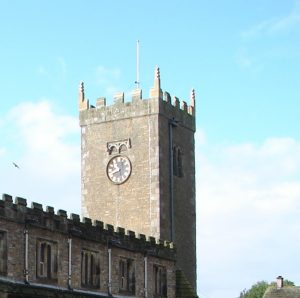
We cannot be certain when the first clock was fixed in the church tower. However, church records state that in 1749 that the clock was ‘so very old’ and in such a bad state of repair that the church wanted to raise money for a new one. It has been suggested that the original clock may have been installed at the same time as the original bells. It should be remembered that Askrigg in the 18th century was renown as a centre for clock making.
Many of the prominent locals – Thomas Metcalfe, Simon Pratt, Margaret Lightfoot, George Metcalfe, Jeffrey Wood and George Calvert, together with clockmaker’s wife Mary Pratt of Camshouses were among the largest contributors. The ’new’ clock cost £18 16s and remained in place for just over 100 years, until a replacement was made in 1854 and that in turn was replaced with the current clock in 1902, when assistance from a Leeds company was required as no clockmaker remained in Askrigg.
The clock chimes the hour and can be heard at quite a distance. It is maintained by Cumbria Clocks, who also maintain and repair Big Ben at the Houses of Parliament.
